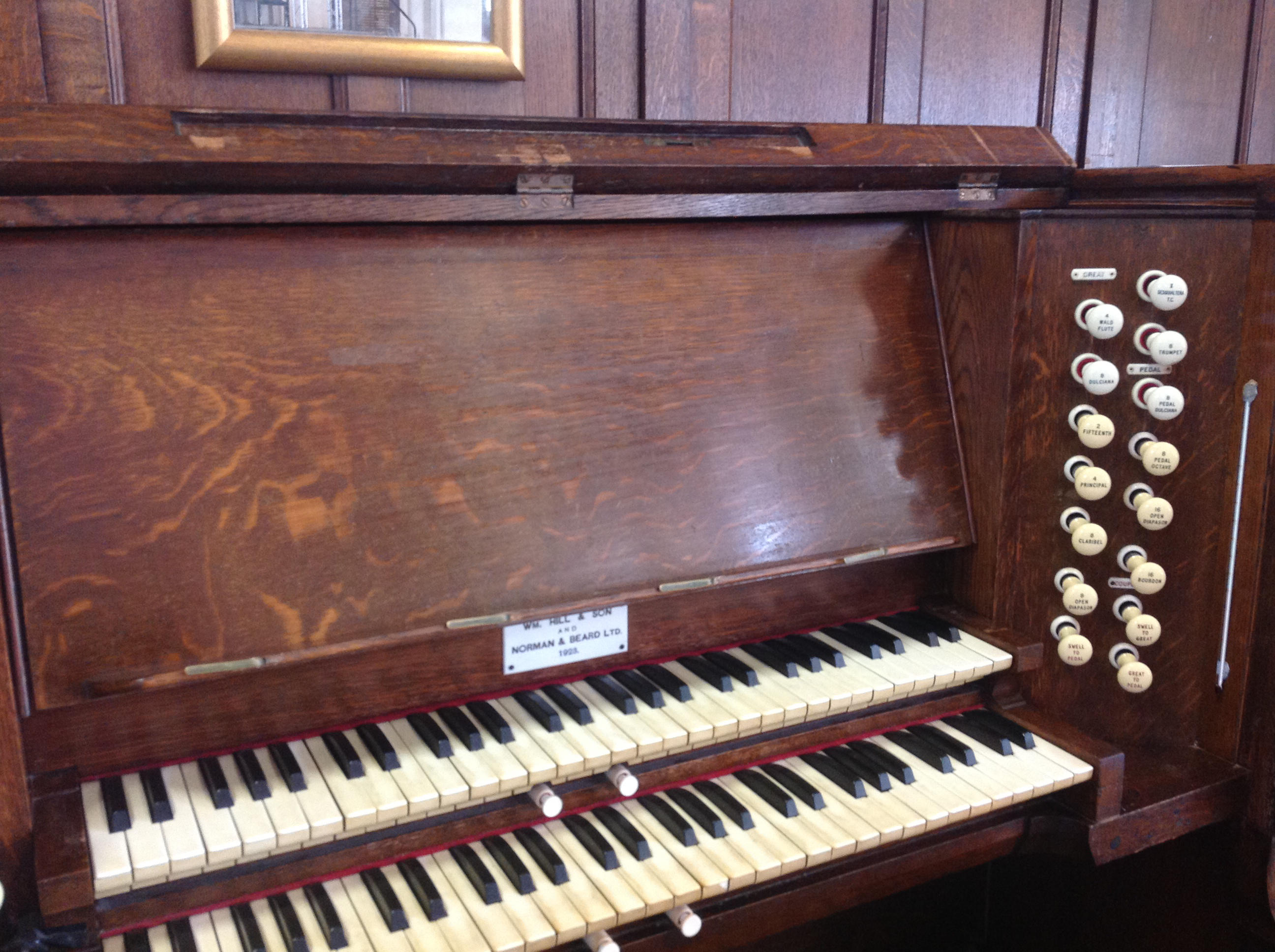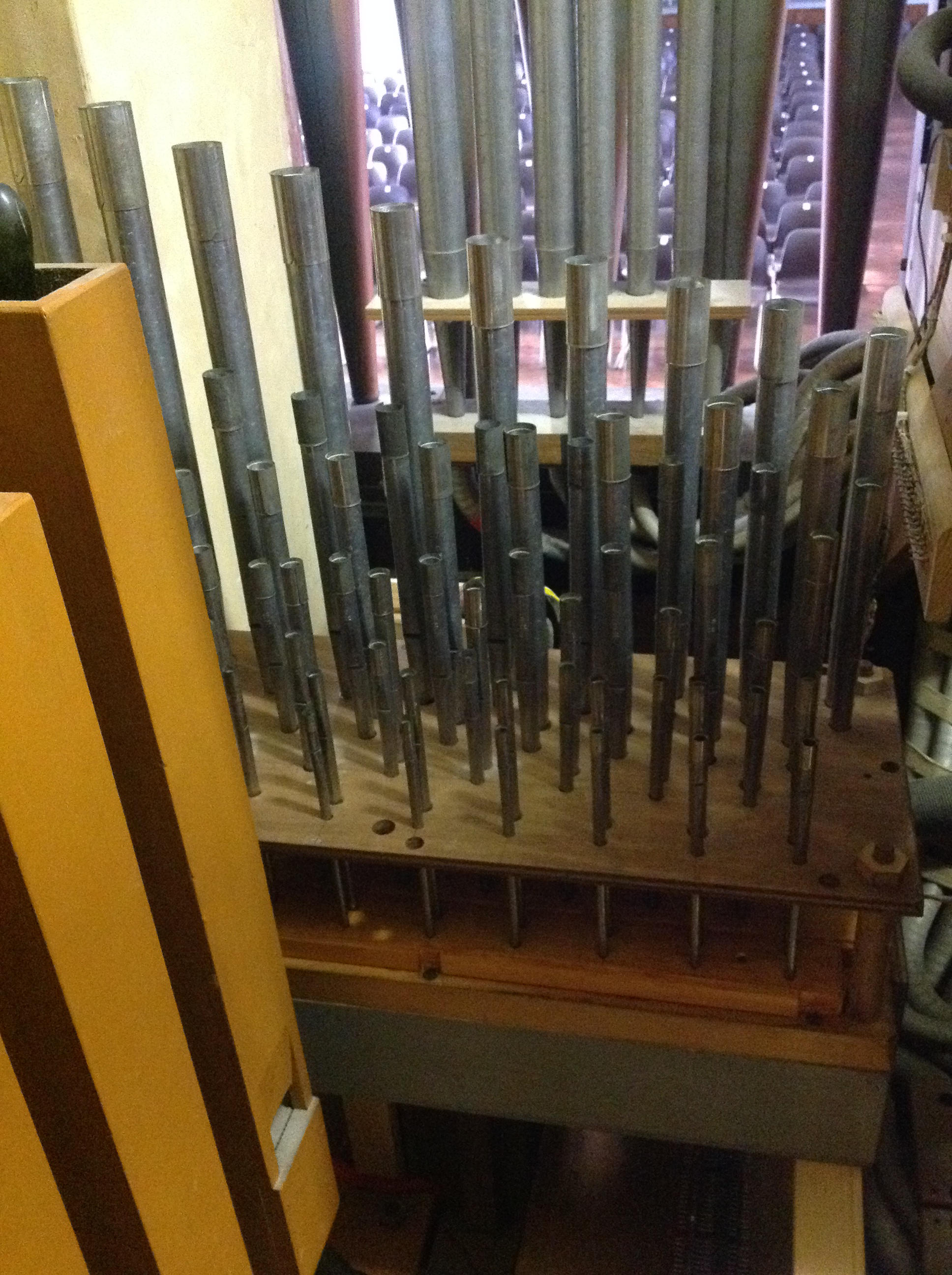

After nearly a century of first-class service, the Hill, Norman and Beard organ in the school hall has, between 2008 and 2014, been progressively improved through the installation of a number of extra ranks of pipes, providing many more tone colours and a noticeable boost in power. The pipework and mechanisms involved in this extension have been rescued from two redundant church organs: all components being used have been thoroughly overhauled and, where necessary, modified to suit their new environment. This additional section, whilst sharing the existing wind supply, is electrically operated through impulses received from contacts now installed on the keys and pedals, has its own wind chests and stands quite separate from the main, pneumatically powered instrument of 1923 - which remains virtually untouched and can, if required, be heard and played in its original form.
For the non-technically minded, such operations are rather like adding instruments to an incomplete orchestra (the organ, when built, was of very modest resources), increasing the variety of timbres available and enabling a wider range of music to be performed. The initiative for this came in 2002, from two lower-school pupils - Jonathan Roberts and Gregory Tucker - and the work has since then been carried out under the jurisdiction of retired teacher Gerald Usher, with further help from five more pupils, all of them sixth-form organ students. With the inauguration of OSOS, this pattern continued, culminating in the exciting announcement in 2017 that the organ was to be professionally rebuilt, incoroprating all of this work from recent years, and further expanded!

The additions that may currently be heard on the organ have been gradually added since 2008. A Dulciana rank on the Great was the first 'addition', effectively adding back in what was taken out when the Fifteenth was added in 1975. The lowest pipes of this rank are actually those of the original Dulciana rank which remained in situ as they form part of the casework visible from the hall. This was further made available on the Pedal to provide a softer tone to the Pedals without couplers.
Subsequently, a Trumpet rank has been added to the Great, some of which is mounted horizontally ('en chamade') raised up high just behind the casework pipes for maximum projection, providing the Great with its first reed stop. Later additions added a Wald Flute 4' rank and Sesquialtera to the Great.
The additional pipe ranks installed thus far have brought considerable sparkle and clarity to the upper ranges of the instrument; we hope to match this in the near future by installing a 16 ft reed stop which will add extra punch and definition to the bass department. Most of the mechanisms, fittings and circuits for this are already in place and it only requires the acquisition of twelve large pipes to make it a reality.
Work subsequently continued with the first priority being given to updating the elderly pneumatic control pistons on the console, which are now sluggish in operation and require much dexterity on the part of the player to achieve tonal changes of any rapidity.
In addition, following the great success of the organ's expansion with reed, flute and mutation stops added to the Great keyboard, we were pleased to announce at the end of 2015 that work had commenced to add a pair of string stops to the Swell keyboard in order to provide a quiet and yet incisive string-toned colour.
All of the work from this pre-2017 expansion scheme has since been completed and incorporated as part of the major organ work undertaken by the Village Workshop organ builders in 2017.